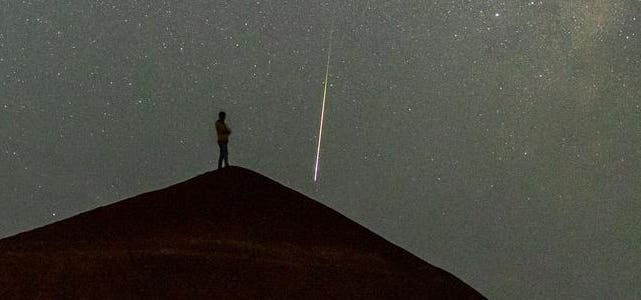The Perseids meteor shower—the most popular of the year—is about to peak. It’s time to head for the countryside, find a dark sky and try to see over 50 “shooting stars” per hour streak across the night sky.
“The Perseids are one of the best meteor showers of the year,” said Dr. Nick Moskovitz, planetary astronomer at Lowell Observatory, in an email. “For best viewing, find a dark site, away from any lights. At the peak, you may see up to 100 meteors per hour.”
Here’s when, where and how to see 2023’s Perseids meteor shower:
Perseids 2023: When to See ‘Shooting Stars’
The Perseids meteor shower is worth catching on its peak night. According to Sky At Night, there’s a period of 16 hours when activity is enhanced. It falls by 50% outside of this window. “The peak of the shower will be after midnight on August 13, but any of the days before or after that should be good as well,” said Moskovitz.
The precise peak this year is predicted to occur at 04:00 Universal Time on Sunday, August 13, which translate as:
- 12:00 a.m. EDT on Sunday, August 13.
- 11 p.m. CDT on Saturday, August 12.
- 9 p.m. EDT on Saturday, August 12.
- 10 p.m. MDT on Saturday, August 12.
- 8 p.m. PDT on Saturday, August 12.
So wherever you are in North America you should start looking a couple hours after sunset (about 10 p.m.) and stay up until it begins to get light about 4 a.m. Good luck! (Bring coffee).
Perseids 2023: Where to See ‘Shooting Stars’
Given that Perseid meteors appear to come from the same area of the sky as the constellation Perseus, it may seem reasonable to look in that direction. That would be the north-east from the northern hemisphere. However, since the trails left in the night sky by Perseid meteor shower are fairly short it’s best to look away from that so-called radiant point, so to either to the north or to the east.
“Shooting stars” can appear anywhere in the night sky, but if you look about halfway up the sky to the north or east you stand a very good chance of seeing some bright Perseids.
If you want to look at long trails, look to the south or west, where the Perseids will appear to come from behind you. For “Earthgrazers”—meteors with long trains that seem to skim just above the surface—look immediately after dark.
Perseids 2023: How to See ‘Shooting Stars’
Here are some tips on seeing meteor showers from NASA:
- The best viewing time will be after midnight.
- Get as far away from urban light pollution as possible.
- Find a location with a clear, unclouded view of the night sky (try camping).
- Dress warmly—it may get very cold.
- Be patient and watch for at least half an hour, preferably on a reclining chair or ground pad.
- Don’t use a telescope or binoculars—they will massively reduce your chances of seeing “shooting stars.”
- Avoid looking at your cellphone or any other white light— it will destroy your night vision. Use red light only.
Perseids 2024: When is the next one?
The next peak of the Perseids meteor shower will occur on August 12-13, 2024.
Wishing you clear skies and wide eyes.
Read the full article here










